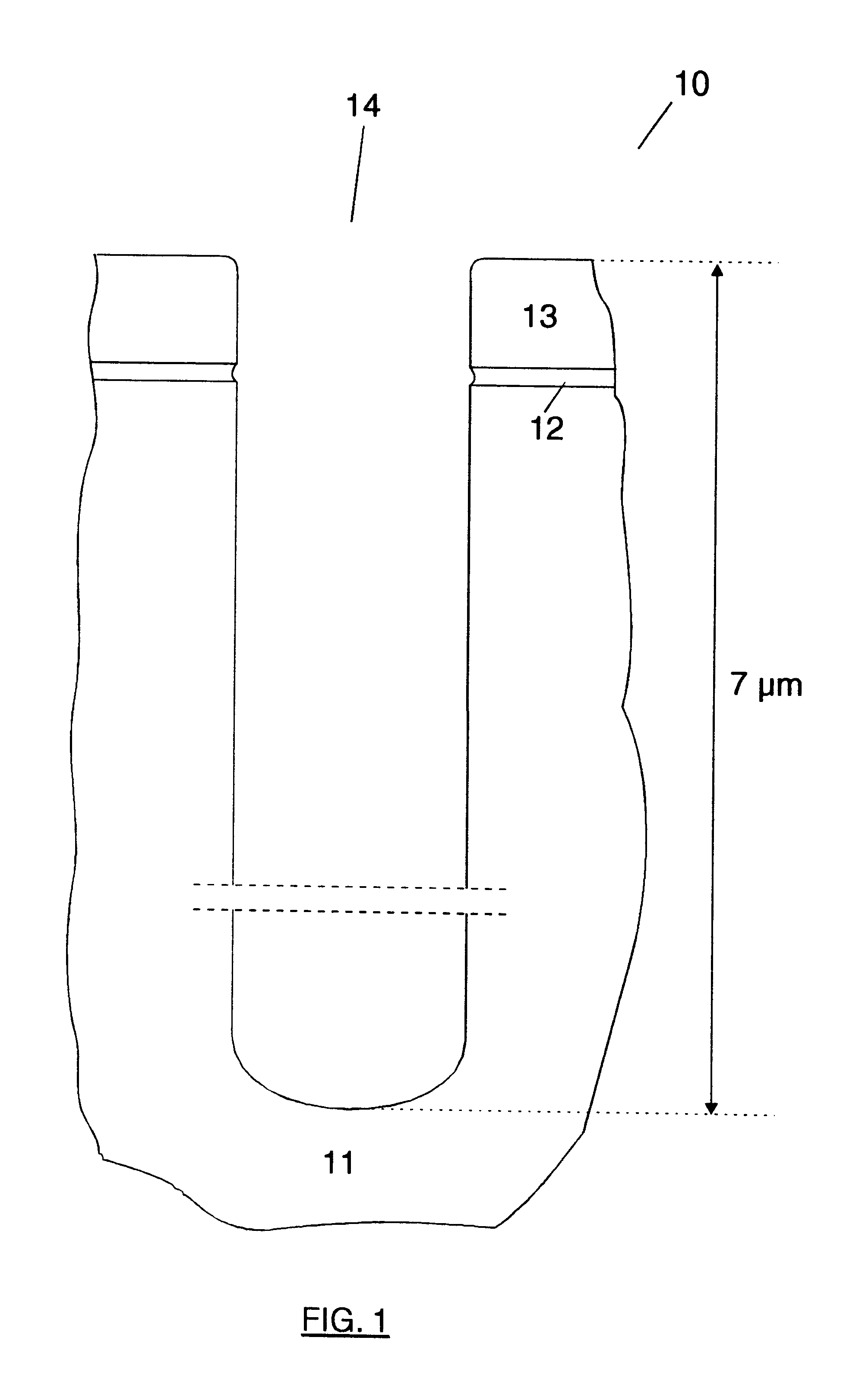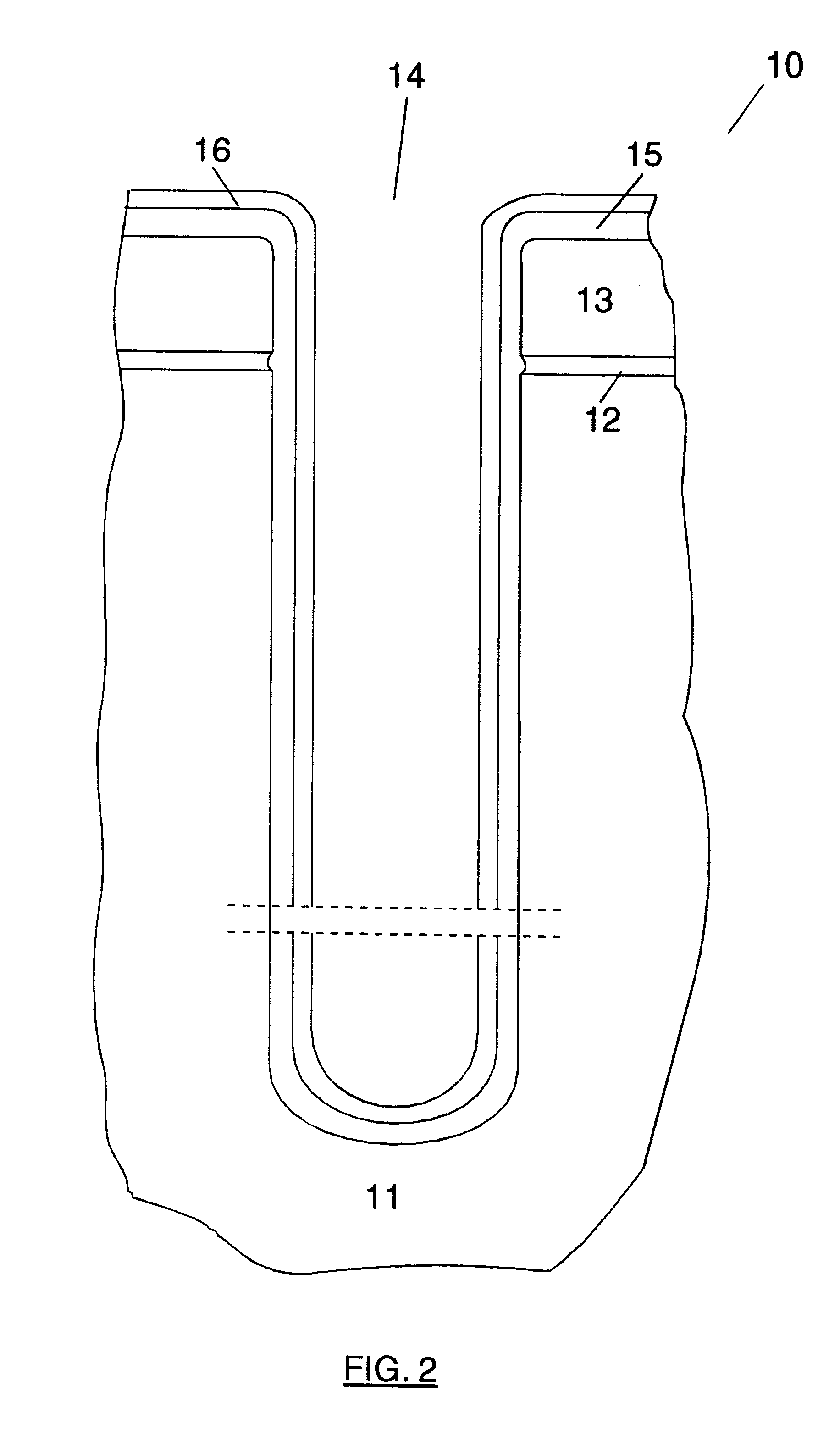Method for buried plate formation in deep trench capacitors
a capacitor and trench capacitor technology, applied in the direction of basic electric elements, electrical equipment, semiconductor devices, etc., can solve the problems of difficult formation of buried plates, and achieve the effect of simplifying the manufacturing process flow
- Summary
- Abstract
- Description
- Claims
- Application Information
AI Technical Summary
Benefits of technology
Problems solved by technology
Method used
Image
Examples
Embodiment Construction
The buried plate formation process specifically includes the eight basic steps recited below.
(1) Depositing a conformal layer of arsenic-doped silicon glass (ASG) onto the structure.
(2) Depositing a conformal layer of SiO.sub.2 atop said ASG layer.
(3) Filling the deep trenches with a photoresist layer.
(4) Removing the photoresist material down to a given depth into deep trenches.
(5) Removing SiO.sub.2 and ASG materials from unprotected areas.
(6) Stripping remaining photoresist layer from the bottom of deep trenches.
(7) Out-diffusing arsenic from the ASG layer into the silicon substrate.
(8) Finally, removing SiO.sub.2 and ASG materials from the bottom of deep trenches.
All these processing steps are conducted in the Deep Trench Module.
FIG. 1 schematically illustrates the starting structure mentioned above bearing numeral 10 consisting of a P-type silicon substrate 11 with a 10 nm thick silicon oxide (SiO.sub.2) and a 220 nm thick silicon nitride (Si.sub.3 N.sub.4) layers respectively ...
PUM
 Login to View More
Login to View More Abstract
Description
Claims
Application Information
 Login to View More
Login to View More - R&D
- Intellectual Property
- Life Sciences
- Materials
- Tech Scout
- Unparalleled Data Quality
- Higher Quality Content
- 60% Fewer Hallucinations
Browse by: Latest US Patents, China's latest patents, Technical Efficacy Thesaurus, Application Domain, Technology Topic, Popular Technical Reports.
© 2025 PatSnap. All rights reserved.Legal|Privacy policy|Modern Slavery Act Transparency Statement|Sitemap|About US| Contact US: help@patsnap.com



